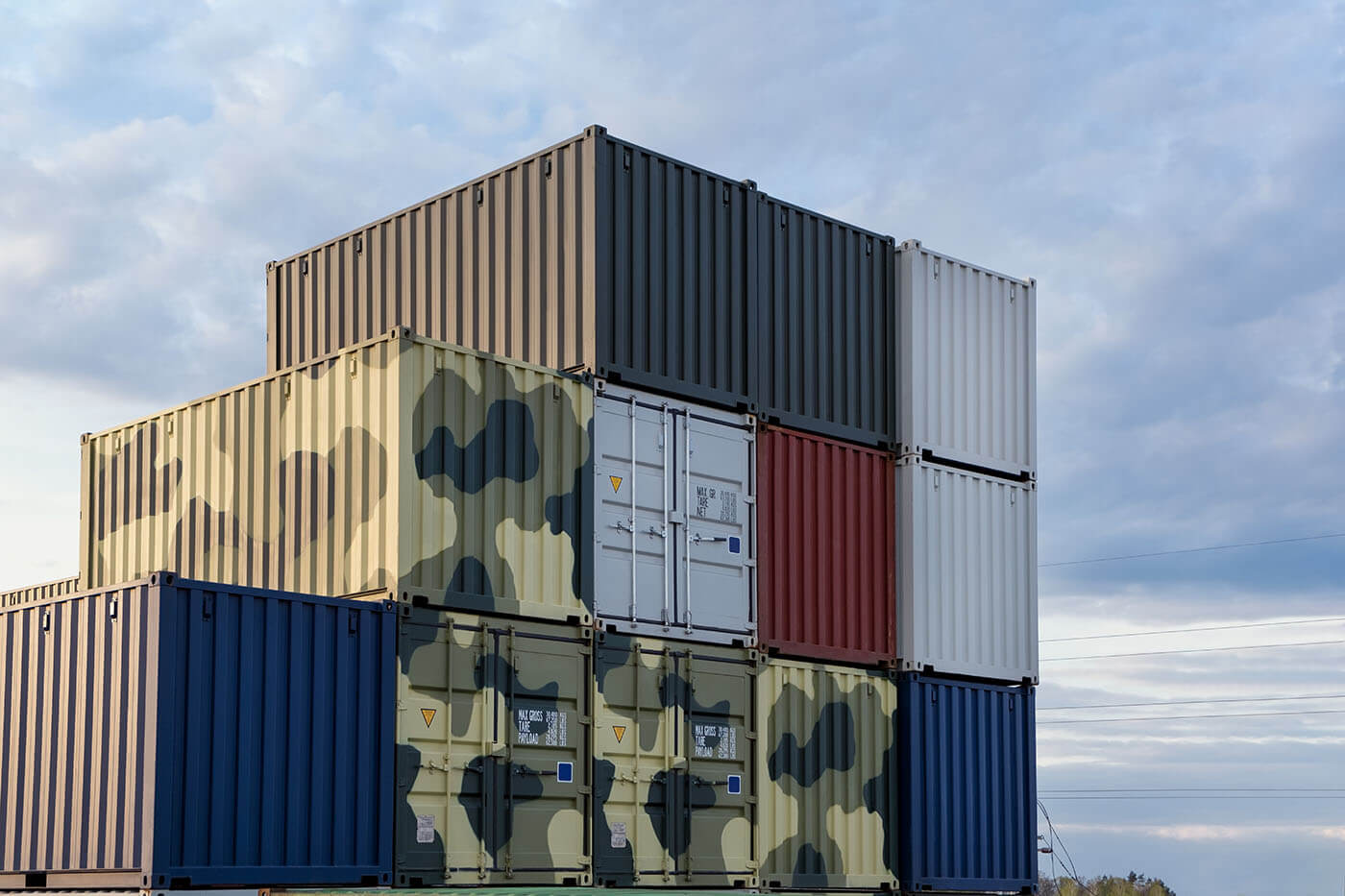Introduction
A developer and manufacturer of armament systems needed precision climate control for a shipping container that would transport valuable and sensitive materials in unpredictable conditions. The company partnered with Air Innovations to build a customized environmental control unit (ECU) that could maintain temperature, humidity, and cleanliness of a transport container both on the ground and at sea.
Challenges
The shipping container would be moved from land to sea and back again, which presented several unique challenges Air Innovations would need to address when designing the ECU.
First, the ECU would need to be able to operate in a physically unstable environment. Personnel would transport the container on the back of a truck and move it to a ship via a crane. The military ECU would also need to tolerate the constant movement and vibration associated with being on a truck and ship.
The second challenge was also related to being at sea: protecting the ECU from humid ocean air, which is highly corrosive.
Third, the ECU would be installed inside the mechanical section of the container, with ambient temperatures fluctuating between -10°F (-23°C) to 115°F (46°C). The ECU would need to be configured to recirculate conditioned air to the container with these extreme temperatures in mind.
Finally, the client was concerned with non-operational loading and requested a tilt sensor and mechanism to shut down and restart the unit safely.
The Solution
The Air Innovations team engineered, manufactured, and tested a custom ECU configured to recirculate conditioned air to the client’s transport container.
The team utilized simple solutions to protect the ECU from exposure to constant external movement. They installed rubber feet on the unit to dampen the vibration from trucks and ships. The heating and cooling controls were comprised of basic bimetallic thermostats.
To prevent compressor oil starvation while being moved or at high seas, Air Innovations installed a helix discharge line to allow the compressor oil to drain back to the compressor to prevent it from seizing up. To give the oil enough time to return to the compressor, a tilt switch/timer combination was used to shut off the ECU to prevent damage to the compressor. After a predetermined time, assuming reasonably level operation, the ECU would be turned back on.
The engineers covered the aluminum cabinet with black epoxy paint to address the humid, salty sea air. In addition, all internal metal components were either painted aluminum or stainless steel to prevent rust and premature corrosion.
The system was configured with 100% recirculating air with wide temperature tolerances from 40°F (4°C) to 80°F (27°C). A 4.5kW heater and an air-cooled condenser with a coated coil were used to protect the unit from extreme temperatures. The shipping container was also insulated to help mitigate exterior surface solar loading.
Lastly, the team utilized an off the shelf tilt sensor and solid-state timer to safely shut down and restart the ECU when the ship’s movement caused the container to tilt beyond 15 degrees.
The Air Innovations engineers were excited to bring their 100 years of combined experience to this important project and look forward to future collaborations with this client.
The Result:
The environmental control unit included the following:
- Specified ambient conditions: 10°F (-23°C) to 115°F (46°C)
- Specified return air conditions: 40°F (4°C) to 80°F (27°C)
- 800 CFM design airflow
- 0.5” wc external static pressure
- Air-cooled condenser with coated coil
- 4.5kW electric heater
- Non-operational loading: 1.8g longitudinal, 1.0g lateral, 1.8g vertical, 80° tilt
- Hot gas bypass refrigeration control
- Nominal 17,000 BTUH compressor R-134a refrigerant
- Meet or exceed UL standards
If you’re ready for a custom solution from Air Innovations, like these custom environmental control units, contact us by submitting a Project Inquiry or calling 1-800-835-3268 today.
For case studies on other military projects we’ve worked on, view our general case studies page. We also have whitepapers covering the aerospace industry, semiconductor industry, and cleanroom industry. The whitepaper page can be found here.


